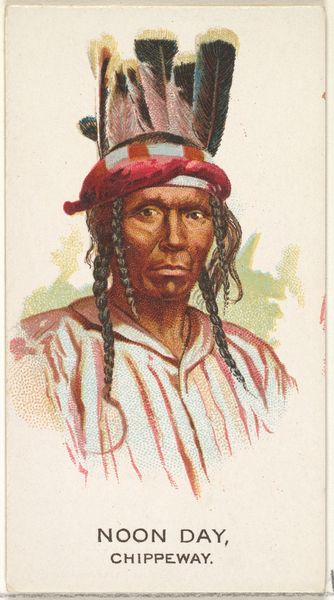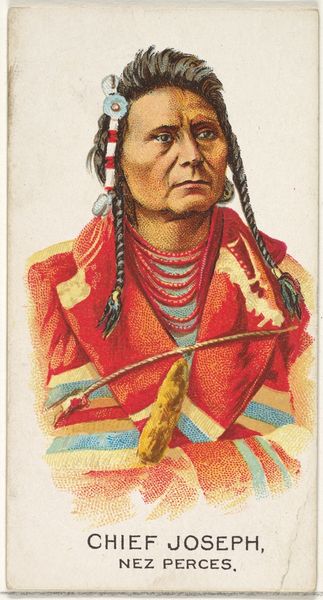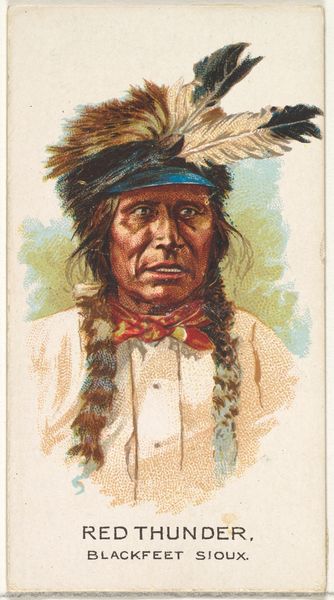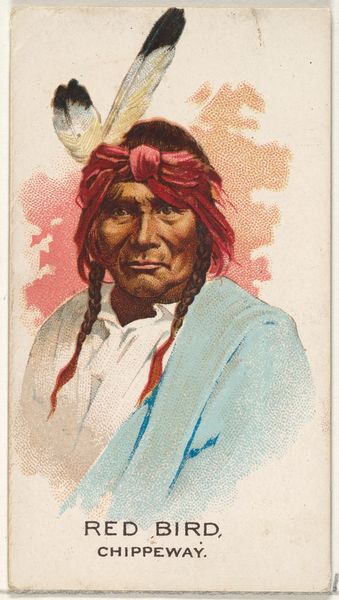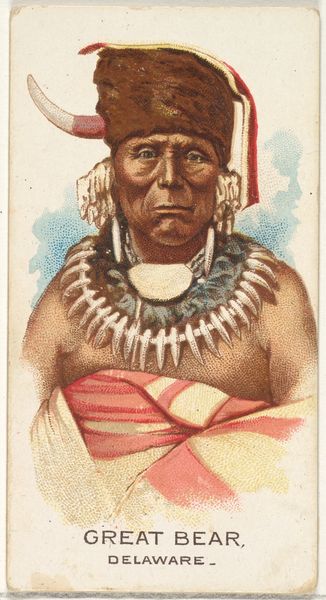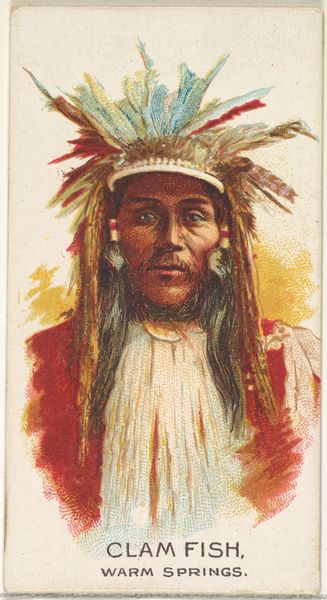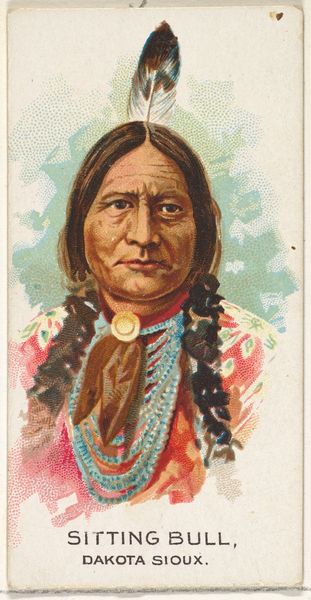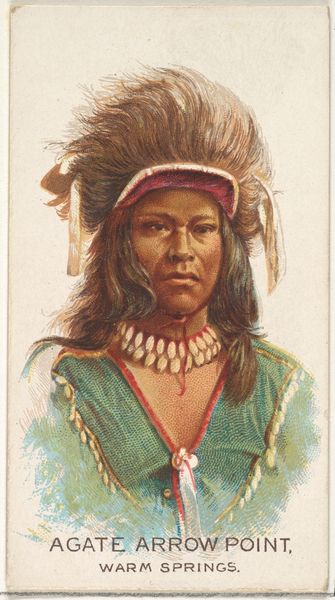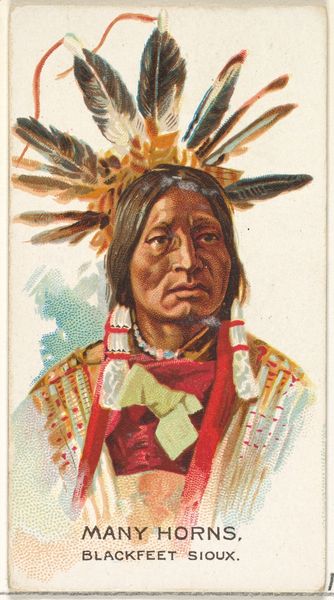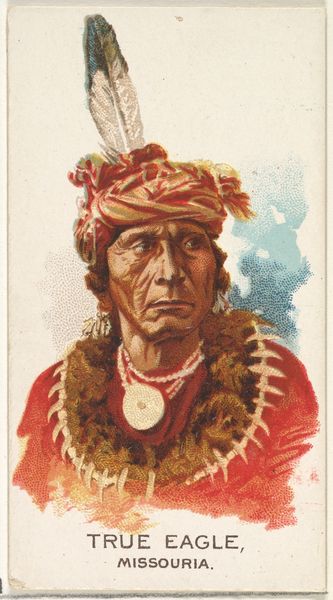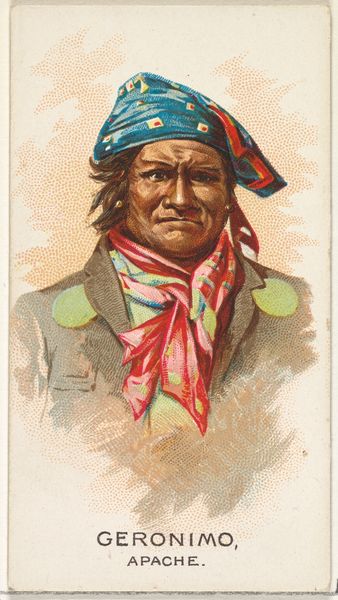
Bull Head, Pawnee, from the American Indian Chiefs series (N2) for Allen & Ginter Cigarettes Brands 1888
0:00
0:00
drawing, coloured-pencil, print
#
portrait
#
drawing
#
coloured-pencil
# print
#
caricature
#
caricature
#
coloured pencil
#
watercolor
Dimensions: Sheet: 2 3/4 x 1 1/2 in. (7 x 3.8 cm)
Copyright: Public Domain
Curator: So here we have "Bull Head, Pawnee," from the American Indian Chiefs series by Allen & Ginter, dating back to 1888. It’s one of many chromolithographs produced as collectible inserts for cigarette brands. Editor: The image is striking—but not in a good way. There’s an uneasy blend of the stereotypical and the oddly contemporary. The man’s fur hat clashes so sharply with the somewhat awkwardly-fitted business suit and silk scarf. Curator: That’s a key point. These cards were designed to appeal to a predominantly white, middle-class consumer base. The inclusion of American Indian chiefs alongside baseball players and actresses reinforced a certain exoticism, turning these individuals into marketable commodities. Editor: Commodities indeed. It's unsettling how Bull Head is presented. His direct gaze challenges the viewer, yet his cultural identity feels…flattened, reduced to marketable tokens that promoted harmful and dismissive stereotypes. I'm disturbed to see that the only 'traditional' elements here – the feather, the braids – are visually pushed to the periphery. Curator: Precisely. These images weren't about accurate representation but about constructing a narrative. They fed into a national narrative of westward expansion, one where Indigenous populations were simultaneously romanticized and erased. Think about it— the commercial exploitation of tobacco paralleled the exploitation of Indigenous land and resources. Editor: And this casual reduction through color and line reinforces the idea of Indigenous people as a vanishing race—as almost relics, neatly packaged for white consumption. He is dressed in ways meant to diminish cultural authenticity by contrasting the suit jacket and gaudy ascot against what little semblance of tradition is permitted. This cigarette card becomes not a celebration but a confiscation of identity, turning it into ephemeral advertisement. Curator: Absolutely. This object reveals how deeply embedded colonialism was in everyday life, how visual culture contributed to a system of power that marginalized Indigenous voices. Editor: Seeing the art from this lens leaves me more aware of my complicity as a viewer today, reckoning with historical and continuous patterns of misrepresentation. Curator: It is important to analyze not just what's in the image, but how the image itself functions within broader cultural and economic systems. This card does not simply present; it actively participates in defining power relationships.
Comments
No comments
Be the first to comment and join the conversation on the ultimate creative platform.

